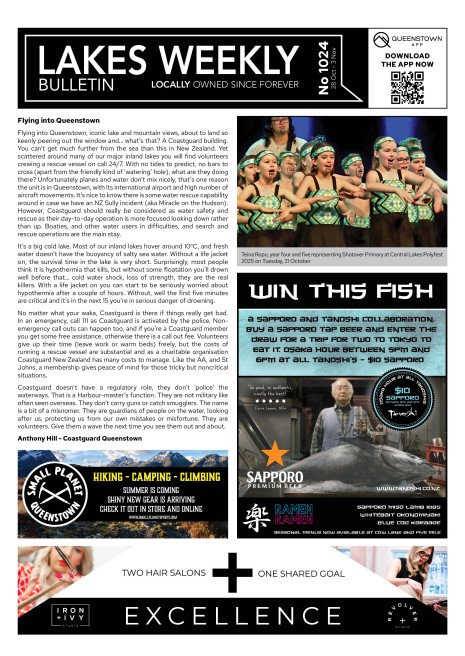Increased Avalanche Danger following recent snow

NZ Mountain Safety Council (MSC) is encouraging backcountry snow enthusiasts to stay informed and stay safe this weekend, with increased avalanche danger in many parts of the South Island.
“We’re urging backcountry skiers, snowboarders and climbers to exercise extreme caution this weekend, and to check the NZ Avalanche Advisory before making any decisions about heading out,” says MSC Chief Executive Mike Daisley.
The NZ Avalanche Advisory (NZAA), operated by MSC, is currently forecasting high avalanche danger in the Queenstown, Wānaka, Aspiring and the Arthur’s Pass, Aoraki/Mt Cook, Ohau, regions. This follows significant snowfall, combined with unstable weather conditions, that are set to continue over the weekend.
“A high rating signals very dangerous avalanche conditions, where naturally occurring avalanches are likely and human-triggered avalanches are very likely. In these conditions, travel in avalanche terrain is not recommended,” says Daisley. “As the storm clears, a conservative approach will be critical for keeping safe.”
Daisley reminds backcountry enthusiasts to check the latest NZAA avalanche forecast, so they can stay up to date with the current avalanche danger and to understand the specific avalanche problems that are likely in their local alpine area.
The continuing poor weather forecast, including low visibility and strong winds, also means adventurers must be prepared for challenging conditions, says Daisley.
“Even experienced backcountry users need to be cautious, plan their trips thoroughly, and be ready to adapt to changing conditions. Safety must be the top priority. Equip yourself with the necessary gear and be ready to turn back if conditions deteriorate.”
NZ Avalanche Advisory
The NZ Avalanche Advisory, which is operated by NZ Mountain Safety Council, is New Zealand's official backcountry avalanche forecasting network. The NZAA provides avalanche forecasts for 13 regions across the country that advise recreational users of avalanche danger. Forecasts are written by a network of snow safety professionals based on the current snow conditions, information provided by commercial operators, public observations and the weather forecast.








